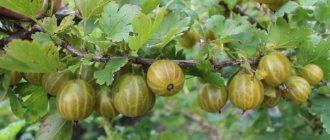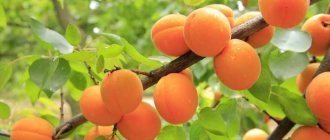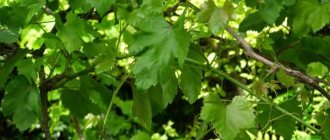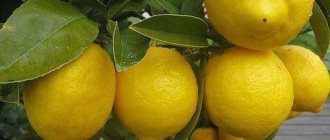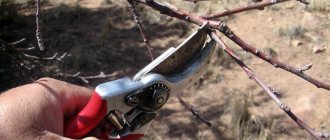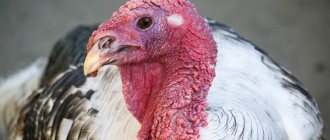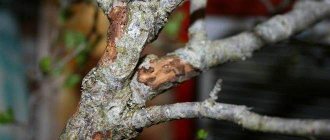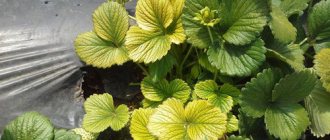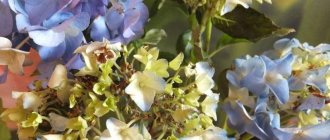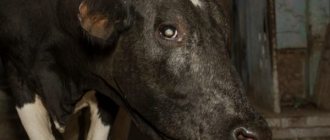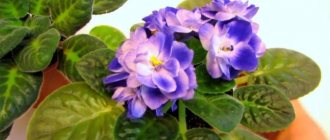Problem 1: Lack of pollination
Most varieties of cherries sold in stores and nurseries are self-sterile. This means that in the absence of a pollinator tree growing nearby (at a distance of up to 10 m), the cherry will set no more than 5% of the fruit. Partially self-fertile varieties are slightly less common - they are capable of setting about 10% of the fruits. And there are very few self-fertile varieties that set about 50%. However, even they bear fruit better when a pollinator grows nearby.
It is not enough to plant several trees of different varieties nearby. It is necessary that their flowering dates coincide.
What to do?
Choose self-fertile cherry varieties and plant trees in groups of 2-3 or intersperse them with cherries.
- Top 7 best self-fertile cherry varieties
If the area of the plot does not allow you to plant several cherry trees, choose a seedling of a self-fertile variety!
Incorrect process of planting a young plant
Planting a seedling too deep can cause the tree to weaken and drop flowers. The location of the root collar of a young tree should be 5 centimeters higher than the compacted and watered soil.
Excess moisture is detrimental to the plant . That is why groundwater should be located no closer than 1.5 meters to the roots. Not only caring for cherries must be carried out according to the rules, but also planting its seedlings. This way you can avoid many problems in an already mature plant.
Problem 2. Unsuitable cherry variety
Cherry is a southern tree, and therefore it is very sensitive to climate. Not all varieties can take root even in the Moscow region, let alone Siberia, the Urals and other northern regions. The tree may be too cold or windy, causing it to bloom but not set berries.
Cherries begin to bear fruit at 5-7 years of age, so you should not expect harvests from them too early.
What to do?
Buy seedlings of zoned cherry varieties, and try to do this in trusted local nurseries.
- Top 10 varieties of cherries for every taste
Description and photos of the best varieties of cherries.
How to care if the tree does not bear fruit
When planting seedlings before the period of bud swelling, it is necessary to prune the crown. Sections must be treated with varnish. At temperatures above 18 degrees, it is necessary to carry out preventive treatment of the tree against parasites or diseases.
Feeding is produced from the fourth year of a tree’s life; the amount put into the soil during planting is enough for it to last for three years. Nitrogen fertilizers are used earlier, in the second year of life.
Advice. If necessary, you can make a cherry rootstock to an old tree. This operation should be carried out in the spring.
It is important not to forget about watering, loosening the soil, removing weeds and shoots. Loosening is carried out in the summer. The thickened crown needs to be discharged. Watering is carried out three times per season. Before watering, the soil is loosened, and after - mulching. Urea, potassium, phosphorus or chicken droppings are perfect for fertilizer. Harvest occurs at the end of May or beginning of June.
Advice. Young trees should be covered with burlap for the winter, avoiding artificial materials that cause decay. Mature trees need to be mulched and the trunks whitened. They endure winter easily.
Follow these simple rules for caring for your cherry tree, and it will not stop bearing fruit. Every summer you will have a large harvest of tasty and aromatic cherries on your table.
Problem 3: Acidic soil
Sweet cherries, like cherries, prefer neutral and alkaline soils, but will not produce a harvest in acidic soils and will grow slowly. Therefore, choosing a place for planting soil should be approached responsibly. You can understand that the soil is not suitable for a tree by the following signs:
- annual growth of branches and trunk - less than 20 cm;
- the crown consists of bare whips without branches;
- microcracks form on the trunk in large numbers, from which gum oozes;
- most flowers fall off without leaving an ovary.
What to do?
Have you noticed these and other signs of weakening in the tree? Change the acidity of the soil underneath using lime, dolomite flour or other deoxidizing materials.
- Soil acidity: determine and regulate
If your soil is highly acidic, this can seriously harm your plants. How do you know when it's time to take action?
- How much lime should be added to the soil on the site
We tell you how to properly lime the soil.
Some cherry pests: representatives and control of them
From time to time, various harmful insects attack cherries. Let's look at the most likely uninvited guests.
Cherry aphid
These are small (2-2.4 mm) pear-shaped black insects. They overwinter as eggs laid at the ends of shoots near the buds. In spring, larvae appear and feed on the sap of young leaves and shoots. In this case, the leaves curl into a tube, and later dry out and turn black. These harmful insects are also brought to the crown by ants and placed on the leaves. During their life, aphids secrete a sweetish sticky liquid called honeydew, which is loved by ants and other insects, as well as sooty fungus.
Aphids settle on the inside of leaves
The following techniques are used in the fight against aphids:
- Removing affected parts of the plant.
- Treatments with insecticides, for example, Nitrafen, Confidor, Decis, Iskra, etc. During the ripening period, biological preparations are used - Fitoverm, Fitolavin, Iskra-Bio, etc.
- Of the many folk remedies, the most commonly used are: Tobacco infusion. To prepare it, 500 grams of tobacco dust are dissolved in a bucket of water and left for 3-4 days, after which 50 grams of laundry soap, grated on a coarse grater, are added to improve the adhesion of the solution to the leaves.
- Infusion of 500 g of onion peels in hot water. Preparation time: one day.
- Garlic infusion, which is prepared by infusing 500 g of finely crushed garlic in 5 liters of water for 24 hours.
- A solution of 1 tablespoon of soda ash in a bucket of water with the addition of one glass of chopped onions.
Video: treating cherries for aphids
cherry fly
This is the most common cherry pest. This is especially true for middle and late varieties. The cherry fly is small in size - 3-5 mm in length and has a black shiny body. The wings are transparent with four transverse dark stripes. When warm spring weather arrives, the fly flies out and at first (10-15 days) feeds on the honeydew of the cherry aphid, which by this time has already settled on the leaves. After this, the fly lays one egg at a time in the unripe fruits, from which after some time a small (3-6 mm) legless white larva appears. Such berries cannot be saved; the larvae eat them away from the inside.
The cherry fly lays its eggs in the fruits of cherries, from which larvae emerge
The preventative measures described above significantly reduce the likelihood of cherry fly infestation. In addition, during the flight period of the fly, it is advisable to carry out additional treatments with insecticides (Decis, Fufanon, Iskra, Actellik). Two such treatments will be required with an interval of 7-10 days. For early varieties of cherries, only biological preparations can be used, for example, Iskra-Bio, Fitoverm, Fitolavin, etc. Alternative control methods can also be used:
- Treating the crown with strong-smelling infusions - tobacco, pine needles, wormwood, garlic, etc. This causes a repellent effect.
- Hanging traps with bait in the form of sticky sweet liquids - fermented jam, molasses, syrup, etc.
A fly trap can be easily made from a plastic bottle
- Before flowering begins, you can cover the tree trunk circles with agrofibre. The fly will not be able to fly out from under it and will die of hunger.
- Preventing the appearance of aphids on cherries. After waking up, the flies, not finding their usual food, will fly to another place in search of it.
leaf roller
The butterfly of this pest has an inconspicuous appearance and small size. Its wingspan is about 2.5 cm. Caterpillars are even smaller - 1-2 cm, their color is yellow or light green. They often settle on the leaves of the plant one by one, feeding on their pulp and juice. The infestation of cherry by the leaf roller can be easily determined by the leaves twisted and pulled together in a web, inside of which, as a rule, the larvae themselves are located . Prevention and control of them are the same as with other similar insects, for example, the cherry fly.
Cherry leafworm infestation can be easily identified by twisted and cobwebbed leaves, inside of which, as a rule, the larvae themselves are located.
May beetle (May beetle)
The well-known cockchafer is a rather large (17-32 mm) flying insect with an elongated body protected by a durable chitinous cover of black or red-brown color. The beetles themselves feed on plant leaves, but their larvae, which are often called beetles, cause more harm. They gnaw at young plant roots, causing inhibition in their development, and in some cases even death.
Khrushchev larvae live in the soil and feed on plant roots, humus, and plant debris
Khrushchev actively develops and feeds in early summer, and then pupates and leaves for the winter. To detect and destroy beetles, bait is often made in the form of small piles of compost or humus. They are well moistened and covered with roofing felt, slate, etc. After some time, the beetles will gather there in large numbers, attracted by the conditions that are comfortable for them. The gardener will only have to collect them and destroy them. In addition, you can use diazinon-based drugs, for example, Medvetox. Their protective effect lasts for three weeks; diazinon does not accumulate in the soil.
Ants on cherries: how to get rid of them
There is no consensus on the benefits and harms of ants. On the one hand, they themselves actively destroy some harmful insects, and on the other hand, they introduce aphids, fungal spores and various infections onto plants. Therefore, they often follow a compromise option - they do not destroy the ants, but expel them from the site or create insurmountable obstacles for them. There are many ways to do this, here are the most famous ones:
- Installation of catch belts. They can be made of: roofing felt, cardboard, thick foil or other similar materials and have a conical shape, creating an obstacle to movement;
The simplest catching belt can be made from a piece of film and rope
- burlap or other fabric and soaked in a thick layer of grease, or other lubricant or glue;
- porous material impregnated with insecticides and serve not only as an obstacle, but also to kill insects.
- garlic;
For supporters of the destruction of ants, there are many poisonous drugs, for example, Anteater, Ant, Thunder, Provotox, Phenaxin, etc.
Video: how to overcome garden ants
Recent Entries
5 working ways to use tar in the garden 7 indoor plants that help you get married even in adulthood Indoor plants that can bloom in trouble
How to get rid of starlings on cherries
During the ripening period, cherries can be attacked by starlings and other birds. More often, plants of early varieties suffer from them. A suddenly appearing flock of birds can destroy the entire cherry harvest in a matter of minutes. The most reliable option to save the harvest is to cover the tree with a net.
The most reliable option to protect the crop from birds is to cover the tree with a net.
Of course, if the tree is tall and has a wide crown, then this will be difficult to do. In this case, various repellent objects are used. They hang various shiny and (or) rustling objects that ring in the wind on the tree - computer disks, wads of foil, New Year's tinsel, etc. Some claim that starlings are scared off by loud music and during the cherry ripening period they broadcast various musical works on the site all day long. . There are also special ultrasonic repellers, the sound of which is not perceived by the human ear, but birds try to stay away from it. Such devices can be purchased at the store; they have different ranges depending on the power.
There are special ultrasonic repellers, the sound of which is not perceived by the human ear, but birds try to stay away from it
Video: how to protect cherries from birds
Problem 4: Nutrient deficiency
The lack of ovaries in cherries may also be due to a lack of boron - without additional foliar fertilizing, the berries will not set, the flowers will fall off, and over time the tree will completely stop laying flower buds. Most often, a lack of boron occurs on alkaline soils, so soil deoxidation must be approached very carefully.
- Boric acid: use in the garden, vegetable garden and flower garden
Everything you wanted to know about how to use boric acid in the country.
What to do?
To avoid this problem, treat cherry trees twice a year with a solution of boric acid (10 g per 10 liters of water). Spraying should be done before flowering and immediately after it.
Blueberry diseases and their treatment
Any fungal infection spreads very quickly. At the same time, it also damages healthy bushes located in close proximity to the diseased plant. Therefore, it is necessary to act immediately after detecting the first symptoms of the disease.
Since there are many diseases, the fight against each requires a special approach:
- Stem cancer. The plant is treated with one of the modern means - “Topsin” or “Euparen”. The spraying process is repeated 3 times. The first and second times are carried out before flowering at intervals of a week, the third - after harvesting the berries. Affected branches are pruned and burned to prevent spread.
- Phomopsis. One of the control options is also considered to be pruning damaged stems and then burning them. Chemicals such as Topsin, Euparen or Fundazol will also help. The spraying procedure is carried out similarly to that described above when fighting stem cancer.
- Moniliosis and anthractosis. Branches showing signs of disease are pruned. They must be burned.
- Spotting. The bush is treated with Bordeaux mixture. Leaves damaged by the disease are raked into one place and burned. Spraying with karbofos or fufan is allowed before the flowers appear.
- Gray rot. The control method is similar to the described actions for stem cancer.
If a fungal infection damages the berries, they should be picked immediately. If such berries remain on the bush, the fungus survives the winter in them and infects new shoots in the spring. Chemicals from the group of fungicides are effective against any such infections.
The most common blueberry pests are:
- Caterpillars of various insects. They eat leaves.
- Aphid. Reduces the development of young shoots and spreads various infections.
- Flower beetle It feeds on buds and young buds of the plant.
- Leaf roller. It slowly envelops the tops of branches in a web, where it eats leaves and buds.
- Kidney mite. Damages the buds, which leads to the death of the leaf.
- Chafer. It feeds not only on flowers and young leaves, but also on plant roots.
Insecticides are considered a useful means of pest control.
In spring, it is also recommended to remove damaged buds. Some birds eat blueberries. To scare them away, shiny objects are used that are hung on bushes. In addition, you can cover the bushes with mesh.
Problem 5: Bad weather
Weather changes negatively affect this heat-loving tree, and we are not talking about winters at all. Of course, winter frosts can destroy young trees, but adult cherries are not afraid of them if the trunks and branches are whitewashed in a timely manner, as well as the tree trunk area is mulched. Spring frosts are the most dangerous for cherry fruiting. Once the night temperature drops just below 0°C, most of the flowers will simply fall off.
But even in the absence of such destructive phenomena, cold weather, rain or, conversely, dry hot weather will affect the quality of pollination and reduce the yield.
What to do?
Experienced gardeners know how to artificially delay the awakening of cherries, covering the crown from the first spring rays of the sun, so that the time of flowering occurs in consistently warm weather. In addition, if the trees have already woken up and bloomed, they can be protected from frost.
- Returning spring frosts - how to protect plants in the garden
Useful tips to help protect plants that are sensitive to negative air temperatures in late spring and early summer.
Bad climatic conditions
Unsuitable weather conditions are usually the reason why cherries have small fruits. But, if the climate is very unsuitable, there may be no fruits at all, sometimes trees do not even bloom for this reason.
Sweet cherries are extremely vulnerable to frost. Frosts cause particular harm to the tree in spring, when daytime temperatures rise above 10°C. Due to severe cold at night, the inflorescences and ovaries die. Inflorescences suffer already at temperatures of -1C° - -2°C. It is quite difficult to fight the cold.
Frosts occur every year in spring. There are ways to save the harvest. To do this, you should try to delay the start of flowering. This can be done by storing a certain amount of snow at the base of the tree.
Cold winter is also the reason why there are small cherries or no harvest at all. Severe frosts can cause the buds on the branches to freeze. This risk especially increases without proper preparation of the tree for wintering.
Severe frosts are also relevant in autumn, which can lead to kidney damage before winter. Closer to autumn, cherries should not be fed with nitrogen and watered heavily, this increases the risk of freezing in winter.
Problem 6. Fungal diseases of cherries
In old summer cottages, where neighbors and your predecessors have already tried, perhaps, all known crops, fungal diseases are also presented in a wide range. Some of them “prefer” pears, others gooseberries, but there are also “fans” of cherries. There are not many of them, but one is enough to deprive you of a harvest, or even a tree. The most dangerous are considered to be clasterosporiasis, coccomycosis and moniliosis.
What to do?
Regular preventative tree treatments, as well as immediate removal and burning of all affected parts of the tree, including leaves, can protect you.
- Cherry diseases - photo, description, treatment
We tell you how to deal with the most dangerous cherry diseases.
Using bad seedlings
The root system of the cherry tree produces a large number of seedlings. But, they are not always suitable for reproduction. Therefore, it is often not possible to simply take cherry shoots from neighbors. Regrowth does not guarantee the growth of the same variety.
The absence of fruits can also result from other reasons, such as diseases and pest activity. They happen much less frequently than those described above. But, for preventive purposes, cherries should be regularly treated with fungicides. These drugs are used to combat most diseases and pests.
It is also important to systematically take preventive measures. Weeds need to be removed in time, wounds on the trunk should be covered with garden varnish, the lower part should be treated with chalk, and regularly sprayed against fungus and pests.
Note to gardeners
In terms of flowering time, a fruit tree is one of those that begins to smell fragrant not too early, but not too late. Data:
Usually this period coincides with the flowering of pears and plums. It is slightly earlier than in cherry and apple trees, but occurs later than in peach and apricot.
Flowering begins when the air temperature during the day remains steadily at 15-25 degrees (average daily temperatures are at least 10-12 degrees).
The calendar period of flowering depends on the area where the cherry tree grows and the weather conditions of the current winter. Usually the first flowers bloom from the first ten days of April (in the south of the country) until the first days of May (in the northeastern territories). The buds bloom earliest on cherry-hybrid varieties.
The flowers of the fruit tree are collected in large umbrella-shaped inflorescences.
Beautiful and bright flowering lasts approximately 21 days, which also depends on temperature values. If the spring is cool, the period can last up to 23-25 days. In some varieties, flowering lasts no more than 12-15 days.
Surviving winter time
It happens that even hardy plants have buds that die in winter. Sweet cherries are no exception. During periods of frost, entire branches may die, which is why the tree will not bloom in the spring.
To avoid such situations, you will need to take several important steps.
- Increase the winter hardiness of cherries. This can be achieved by planting in cool lowlands, positioning the tree without the presence of shade, pruning it correctly and forming a crown. The tree will become more adapted to the cold if you water it only in dry weather and apply nitrogen and phosphorus-potassium fertilizers.
- In winter, cover the cherries with snow. Hilling up with snow will help protect the plant from freezing. If the bark or branches are damaged in winter, they should be treated immediately. Also, wounds will cause weakness of the cherry, its infertility and pain.
The lack of fruiting in cherries can be explained by many factors. Many of them are associated with poor plant care, as well as insufficient knowledge of the characteristics of the variety. This tree will not require much effort from the gardener in order to produce a bountiful harvest. The main thing is to follow at least the basic rules and pay a little attention to the cherries.
To learn how to shape cherries, see the following video.
–Categories
- Architecture (16)
- Everything for the diary (1608)
- Animation (59)
- For newcomers to LiRu (440)
- For the New Year (68)
- Clipart, masks (27)
- Next buttons (24)
- Comments, wishes (82)
- Beautiful things for a diary (184)
- Message frames (90)
- Resources and links for self-education (52)
- Lessons on professional computer skills (191)
- Backgrounds (137)
- Photoshop (249)
- Country ideas (79)
- For mothers, grandmothers and their children (162)
- Raising a child (27)
- For the development and education of children (75)
- Child health and safety (24)
- Cartoons, audio stories, children's films and music (27)
- For us, smart girls and beauties (237)
- Exercise for facial muscles (5)
- We are healthy and slim (34)
- We are young and beautiful (14)
- Good deeds (682)
- Caring (517)
- Search for missing people (151)
- Home Economics (94)
- Worldly wisdom (42)
- Magazines (8)
- Abroad and us (45)
- Health (425)
- Fine arts (1268)
- Biographies of artists and other interesting facts (15)
- Bouquets, still lifes (45)
- Paintings (1011)
- Learn to draw (18)
- Photographers (135)
- Elegant items (59)
- Interesting (100)
- Interior (309)
- History (17)
- Cinema (239)
- Cinema from the USSR (12)
- Contemporary films (134)
- Good old favorite movie (15)
- Indoor flowers (93)
- Cooking (3224)
- Breakfast items (16)
- Favorites (2)
- Main courses (394)
- Baking (1367)
- Dessert (104)
- Blanks (184)
- Snacks (208)
- National cuisines (95)
- First courses (42)
- Lenten dishes (14)
- Salads (169)
- Tips from experienced chefs (57)
- Decorating dishes (28)
- Literature (399)
- Audiobooks (55)
- My literary experiences (21)
- Read reviews (35)
- Writing Skills (2)
- Poetry (136)
- Prose (20)
- Poems by modern authors (75)
- Biography facts of famous people (46)
- Magic, signs, superstitions, rituals (112)
- Music (808)
- Observations (9)
- Folk crafts (28)
- Vegetable garden (210)
- Postcards, poems, congratulations, etc. (2413)
- EVERYTHING WILL BE FINE! (25)
- Motto of the day (2150)
- Holidays (45)
- Happy birthday (16)
- Useful tips (117)
- Politics (4134)
- Orthodoxy (698)
- Press (23)
- Nature (9)
- Proverbs (76)
- Psychology (186)
- Travel (150)
- Handicraft (11968)
- Beads (33)
- Bruges lace (4)
- All about yarn and needlework tools (19)
- Auxiliary programs and information for needlework (69)
- Embroidery (128)
- Ribbon embroidery (96)
- We knit for children (1313)
- Knitting for children (For the little ones) (214)
- We knit for children (Blankets, bedspreads, blankets) (132)
- Knitting (coat, cardigan) (122)
- Knitting (top, tunic, bolero, sleeveless vest) (650)
- Knitting (symbols) (6)
- Knitting (shawl, cape, stole, poncho) (406)
- Knitting using the loin technique (176)
- Knitting for home (1501)
- Knitting for men (105)
- Knitting for beginners (180)
- Crochet (motifs, patterns) (389)
- Various knitting (189)
- Knitting (sweater, pullover, blouse, jacket) (2431)
- Knitting (patterns) (715)
- Knitted openwork blouses (322)
- Knitted curtains, curtains (33)
- Knitted socks, slippers (150)
- Knitted dresses, skirts (250)
- Knitted blankets and bedspreads (238)
- Knitted tablecloths, napkins (109)
- Knitted hats, scarves, snoods, bacti (348)
- Handmade toys (226)
- Irish lace (453)
- Dolls (21)
- Processing of product parts (113)
- Pillows (75)
- Miscellaneous (152)
- Manufacturing technology of individual product parts (181)
- Tatting (2)
- Freeform (23)
- Flowers made in different ways (197)
- Sewing (194)
- Garden plants (218)
- Ornamental plants for the garden (134)
- Trees and shrubs (66)
- Gardens (77)
- Theater productions (168)
- Life Lessons (12)
- Learning to earn money (185)
- Earn money on the site (53)
- Make money with handicrafts (105)
- Open your own business (6)
- Remote work (12)
- Learn to dress beautifully and fashionably (71)
- These funny animals (43)
- Jewelry (2)
- Humor (68)

